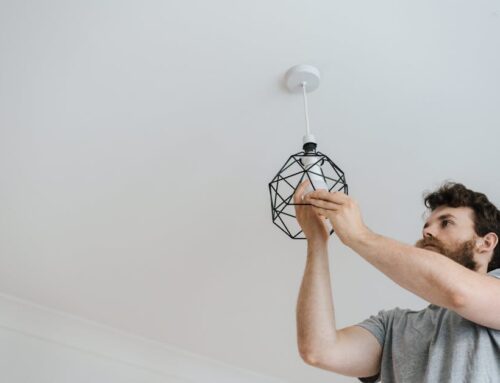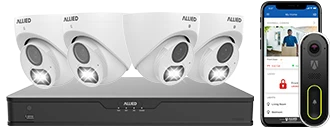The technology used in home surveillance systems has grown by leaps and bounds during just the past few years. The fortunate downside to that is there are so many features to choose from, many homeowners have no idea what features they should look for when buying or leasing a system. Features such as outdoor cameras with night vision are obvious add-ons to the home surveillance systems, and those are even beneficial for small businesses and warehouses. But what about video doorbells, remote access, and monitoring, smartphone apps, motion detectors, door and window sensors or pan, tilt and zoom (PTZ) cameras?
Which are must-haves for your system, which are nice to have and which are not necessary but desirable if they fit your budget? Any good salesman can convince you that each is necessary to make your surveillance system top-notch. After all, why should you deprive your family of top-notch protection? However, at what point do you tap out and scratch the entire idea of installing a new system because it has become too expensive?
In this article, we will look at a few of the features for home surveillance systems and discuss their benefits and liabilities.
Smartphone Apps
There are hundreds of smartphone apps you can couple with home surveillance systems that cost next-to-nothing, compared to the benefits they provide. You can get an app that will allow remote access and video viewing, which can be very handy while out of town. You can even check on that new sitter while you are out at dinner. You can check home environmental controls while out as well, turn the light off and on, change the thermostat or allow entry to the sitter or one of the children who forgot their key. Smartphone apps are as beneficial as they are inexpensive, so make sure any system you install has smartphone app accessibility.
Video Doorbells
Video doorbells are a low-cost, convenient option for home surveillance systems. With one of these installed, you won’t have to worry about porch bandits nearly as much, because if anyone does take something from your porch, you will have video. Just got out of the shower when the doorbell rings? No problem, you can see who’s there. If it’s a delivery, you tell them just to leave it on the porch or you can decide to ignore other, unwanted visitors. Video doorbells are nice to have and, for the price, worth considering.
Remote Access and Monitoring
Remote access and monitoring by a licensed and insured home security team is the bread-and-butter of home surveillance systems. Remote monitoring is a necessary feature; do not skimp on this feature. When you’re away on vacation or a business trip, you want someone reliable watching your home and belongings. When the alarm sounds, your home security team should be able to get in and check the video, turn off the alarm and check window and door sensors. Therefore, you should buy/lease from a reputable local home security company.
Sensors for Home Surveillance Systems
While we’re talking about sensors, there are several must-haves for all home surveillance systems. If the intruders ignore the signs and outdoor cameras, the second line of defense is these sensors. Windows and doors that are out of the view of passing cars and neighbors are the most likely entry point. Believe it or not, 65 percent of all home intrusions happen in broad daylight, while you are working and the children are in school. They’ll gain access through a side window and brazenly walk out the front door as if they belong.
Door and window sensors have long been the norm in surveillance systems, but more sensors are added quite frequently, such as sensors to detect gas leaks, CO2, smoke and mold are just a few.
PTZ and Night-Vision Cameras
Just as surveillance systems have many new options, so, too, do the cameras used to produce a video for law enforcement officers to aid in catching the bad guys. Pan, tilt, and zoom cameras are a valuable addition to any surveillance system. These cameras cover a lot more area with the zoom capabilities and can capture excellent video and images of license plates outside and facial recognition inside.
Night vision with infrared radiation (IR) illuminators or white light with motion detectors attached is now an option. IR illuminators can help your camera get exceptional nighttime videos without creating light pollution for the neighbors. The stealth of these systems will not scare off the intruder, while white lights with motion detectors and alarms will.
For outdoor cameras, make sure they are weatherproof. Cameras that use solar or rechargeable batteries are terrific added features – when the power goes out, these still function.
Allied Home Security – For Home Surveillance Systems
Call Allied Home Security, (866) 255-4338, to get a detailed explanation of what’s available for your family’s protection. The estimate, installation and activation are free. Visit our website to use its contact application, or drop by the office, at 507 North Sam Houston Pkwy E #430.










